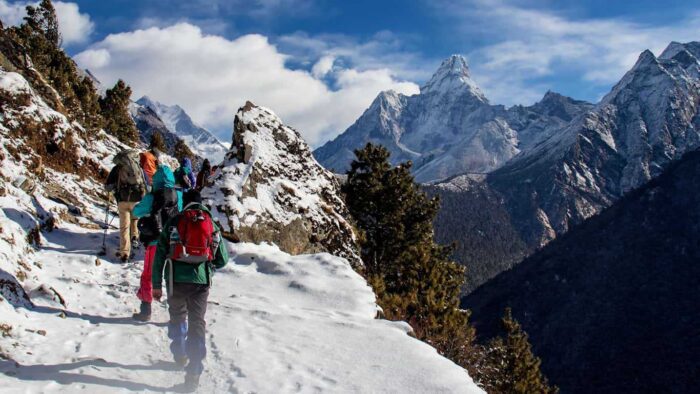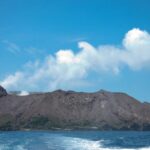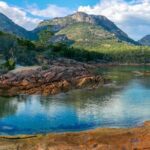The Himalayas, home to Mount Everest and many other iconic peaks, offer some of the world’s most spectacular and challenging trekking opportunities. Trekking through the tallest mountain range in the world is the adventure of a lifetime. However, proper planning and preparation are crucial to ensure you get the most out of your Himalayan expedition while staying safe. In this article we talk about Himalayas Trekking Tips In 2024-Guide for Your Nepal Mountain Expedition.
Table of Contents
When to Go
The best times for trekking in the Himalayas are during the spring (March to May) and autumn (September to November) seasons. During these periods, skies tend to be clearer with less chance of storms or monsoons. Temperatures are warm during the day but can drop sharply at higher altitudes. The summer monsoon season (June to August) brings very heavy rain, clouds and leeches making trekking more difficult. Winters are extremely cold with heavy snowfall on trails.
Choosing a Trek
With so many stunning treks in Nepal, selecting one can be overwhelming. Popular beginner-friendly treks include Everest Base Camp, Annapurna Circuit and Langtang Valley. More challenging options are the Three Passes Route, Kanchenjunga Circuit and Upper Mustang. Consider your experience level, fitness, timeframe and budget when deciding. A reputable guide can provide recommendations based on your needs.
Physical Training
Undertaking adequate physical training before your trek is vital. Cardiovascular exercises like running, cycling and hiking help build endurance to walk long distances and ascend to heights. Focus also on strength training to condition your core and legs to comfortably bear heavy backpacks. Starting training at least 2-3 months in advance and slowly increasing intensity enables your body to acclimatize better once on the trail.
Acclimatization
Allowing your body to acclimatize properly to the high altitude environment of the Himalayas helps avoid serious problems like acute mountain sickness (AMS). Build rest and acclimatization days into your schedule when trekking above 3,000 meters. Increase sleeping elevation by only 300-500m per day. Hydrate frequently, avoid alcohol and get plenty of rest. Recognizing early AMS symptoms like headaches and nausea and descending immediately can prevent life-threatening complications.
Packing Essentials
Carefully curating your packing list ensures you carry only essential, lightweight gear. Critical items include sturdy hiking boots, wool socks, waterproof pants, down jacket, fleece layers, gloves, hat, sunglasses and high SPF sunscreen. Other necessities are headlamp, sleeping bag, insulated pad, first aid kit and medications, multi-tool, maps, compass, local SIM card and power bank with universal adapter. Choose versatile, quick-drying synthetic fabrics over heavy cottons. Waterproof everything in dry bags.
Food and Water
Consuming adequate food and water is crucial when trekking for multiple hours daily and carrying heavy loads. Carry high-calorie foods like nuts, dried fruits, energy bars, chocolate and crackers that provide quick energy boosts. Include electrolyte mixes to replenish salts lost through sweat. Avoid eating uncooked vegetables or fruits or drinking tap water to prevent infections – buy boiled water instead. Be prepared to treat your own water with filtration, UV treatment or boiling if bottled water is unavailable along the route.
Responsible Trekking
Practice responsible trekking to preserve the ecology and culture of the Himalayas. Follow only designated trails to avoid damaging delicate vegetation. Carry out all non-biodegradable waste you produce. Be respectful of local residents, their livelihoods and traditions. Make an effort to support local economies by purchasing handmade goods and hiring local guides. Travel in small groups to minimize environmental impact. Spread awareness of responsible tourism to fellow trekkers.
Health and Safety
Your health and safety should be top priorities on a Himalayas expedition. Always trek with a partner, stay on marked trails, inform someone of your detailed itinerary and set scheduled check-in times. Obtain comprehensive travel and rescue insurance. Carry a first aid kit, whistle, signal mirror and power bank with you at all times. Check weather forecasts daily. Know the signs of high altitude sickness, hypothermia and exhaustion – never hesitate to turn back if required.
Hiring a Guide
First-time Nepal trekkers are best accompanied by a knowledgeable guide. Guides arrange permits, navigate remote mountain terrain efficiently, communicate with locals, arrange food and lodging, handle emergencies and impart invaluable insights into Himalayan cultures and ecosystems. Go with registered agencies hiring certified, professional guides. Validate credentials, experience, reviews and safety records before booking longer high-altitude expeditions.
Conclusion
A Himalayas trek can be the most memorable journey, but mindful preparation is key. Assess your fitness level realistically, train sufficiently and budget adequately before embarking. Pack smartly, acclimatize slowly and refuel properly enroute. Be eco-conscious, culturally respectful and diligent about safety. With the right homework and sensible precautions, you will be richly rewarded with breathtaking vistas and a thrilling adventure of a lifetime. I sincerely hope you find this “Himalayas Trekking Tips In 2024-Guide for Your Nepal Mountain Expedition” article helpful.

Laura is the lead writer at BackpackBeliefs.com, where she specializes in travel guides, cultural exploration, and sustainable tourism. With over 10 years of travel experience and a Master’s degree in Cultural Anthropology, Laura brings valuable insights to her readers.
For the latest travel tips and updates, connect with Laura on Facebook at @backpackbeliefs and Instagram at @backpackbeliefs. where she has 4,622 followers.





